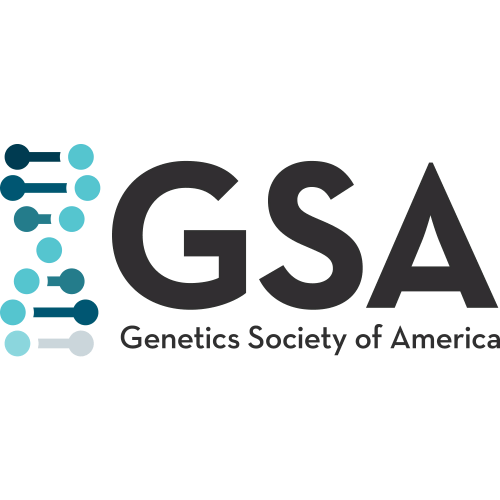Open Access


Genome Biology, volume 15, issue 1, pages R7
RIP-seq analysis of eukaryotic Sm proteins identifies three major categories of Sm-containing ribonucleoproteins
1
Departments of Biology and Genetics, Integrative Program for Biological and Genome Sciences, University of North Carolina, Chapel Hill, USA
|
2
Center for Bioinformatics, University of North Carolina, Chapel Hill, USA
|
3
Sequenom, San Diego, USA
|
4
Curriculum in Genetics & Molecular Biology, University of North Carolina, Chapel Hill, USA
|
Publication type: Journal Article
Publication date: 2014-01-07
Journal:
Genome Biology
Quartile SCImago
Q1
Quartile WOS
Q1
Impact factor: 12.3
ISSN: 14747596, 14656906, 1474760X
PubMed ID:
24393626
Abstract
BackgroundSm proteins are multimeric RNA-binding factors, found in all three domains of life. Eukaryotic Sm proteins, together with their associated RNAs, form small ribonucleoprotein (RNP) complexes important in multiple aspects of gene regulation. Comprehensive knowledge of the RNA components of Sm RNPs is critical for understanding their functions.ResultsWe developed a multi-targeting RNA-immunoprecipitation sequencing (RIP-seq) strategy to reliably identify Sm-associated RNAs from Drosophila ovaries and cultured human cells. Using this method, we discovered three major categories of Sm-associated transcripts: small nuclear (sn)RNAs, small Cajal body (sca)RNAs and mRNAs. Additional RIP-PCR analysis showed both ubiquitous and tissue-specific interactions. We provide evidence that the mRNA-Sm interactions are mediated by snRNPs, and that one of the mechanisms of interaction is via base pairing. Moreover, the Sm-associated mRNAs are mature, indicating a splicing-independent function for Sm RNPs.ConclusionsThis study represents the first comprehensive analysis of eukaryotic Sm-containing RNPs, and provides a basis for additional functional analyses of Sm proteins and their associated snRNPs outside of the context of pre-mRNA splicing. Our findings expand the repertoire of eukaryotic Sm-containing RNPs and suggest new functions for snRNPs in mRNA metabolism.
Citations by journals
|
1
2
|
|
|
Nature

|

Nature
2 publications, 6.67%
|
|
BMC Genomics

|

BMC Genomics
1 publication, 3.33%
|
|
Circulation Research

|

Circulation Research
1 publication, 3.33%
|
|
Genome Biology

|

Genome Biology
1 publication, 3.33%
|
|
Environmental Science and Pollution Research

|

Environmental Science and Pollution Research
1 publication, 3.33%
|
|
Current Biology

|

Current Biology
1 publication, 3.33%
|
|
Nature Microbiology

|

Nature Microbiology
1 publication, 3.33%
|
|
Cell

|

Cell
1 publication, 3.33%
|
|
Trends in Biochemical Sciences

|

Trends in Biochemical Sciences
1 publication, 3.33%
|
|
Plant Journal

|

Plant Journal
1 publication, 3.33%
|
|
BioEssays

|

BioEssays
1 publication, 3.33%
|
|
IEEE/ACM Transactions on Computational Biology and Bioinformatics

|

IEEE/ACM Transactions on Computational Biology and Bioinformatics
1 publication, 3.33%
|
|
Methods in Molecular Biology

|

Methods in Molecular Biology
1 publication, 3.33%
|
|
Methods in Enzymology

|

Methods in Enzymology
1 publication, 3.33%
|
|
Genetics

|

Genetics
1 publication, 3.33%
|
|
Briefings in Functional Genomics

|

Briefings in Functional Genomics
1 publication, 3.33%
|
|
Nucleic Acids Research

|

Nucleic Acids Research
1 publication, 3.33%
|
|
Journal of Experimental Botany

|

Journal of Experimental Botany
1 publication, 3.33%
|
|
G3: Genes, Genomes, Genetics

|

G3: Genes, Genomes, Genetics
1 publication, 3.33%
|
|
Proceedings of the National Academy of Sciences of the United States of America

|

Proceedings of the National Academy of Sciences of the United States of America
1 publication, 3.33%
|
|
RNA

|

RNA
1 publication, 3.33%
|
|
Genome Research

|

Genome Research
1 publication, 3.33%
|
|
Applied Sciences (Switzerland)

|

Applied Sciences (Switzerland)
1 publication, 3.33%
|
|
1
2
|
Citations by publishers
|
1
2
3
4
5
6
7
|
|
|
Springer Nature

|

Springer Nature
7 publications, 23.33%
|
|
Elsevier

|

Elsevier
4 publications, 13.33%
|
|
Oxford University Press

|

Oxford University Press
3 publications, 10%
|
|
Wiley

|

Wiley
2 publications, 6.67%
|
|
Genetics Society of America

|

Genetics Society of America
2 publications, 6.67%
|
|
Cold Spring Harbor Laboratory

|

Cold Spring Harbor Laboratory
2 publications, 6.67%
|
|
Wolters Kluwer Health

|

Wolters Kluwer Health
1 publication, 3.33%
|
|
IEEE

|

IEEE
1 publication, 3.33%
|
|
Proceedings of the National Academy of Sciences (PNAS)

|

Proceedings of the National Academy of Sciences (PNAS)
1 publication, 3.33%
|
|
Multidisciplinary Digital Publishing Institute (MDPI)

|

Multidisciplinary Digital Publishing Institute (MDPI)
1 publication, 3.33%
|
|
1
2
3
4
5
6
7
|
- We do not take into account publications that without a DOI.
- Statistics recalculated only for publications connected to researchers, organizations and labs registered on the platform.
- Statistics recalculated weekly.
{"yearsCitations":{"type":"bar","data":{"show":true,"labels":[2014,2015,2016,2017,2018,2019,2020,2021,2022,2023],"ids":[0,0,0,0,0,0,0,0,0,0],"codes":[0,0,0,0,0,0,0,0,0,0],"imageUrls":["","","","","","","","","",""],"datasets":[{"label":"Citations number","data":[4,5,3,4,1,3,4,1,1,4],"backgroundColor":["#3B82F6","#3B82F6","#3B82F6","#3B82F6","#3B82F6","#3B82F6","#3B82F6","#3B82F6","#3B82F6","#3B82F6"],"percentage":["13.33","16.67","10","13.33","3.33","10","13.33","3.33","3.33","13.33"],"barThickness":null}]},"options":{"indexAxis":"x","maintainAspectRatio":true,"scales":{"y":{"ticks":{"precision":0,"autoSkip":false,"font":{"family":"Montserrat"},"color":"#000000"}},"x":{"ticks":{"stepSize":1,"precision":0,"font":{"family":"Montserrat"},"color":"#000000"}}},"plugins":{"legend":{"position":"top","labels":{"font":{"family":"Montserrat"},"color":"#000000"}},"title":{"display":true,"text":"Citations per year","font":{"size":24,"family":"Montserrat","weight":600},"color":"#000000"}}}},"journals":{"type":"bar","data":{"show":true,"labels":["Nature","BMC Genomics","Circulation Research","Genome Biology","Environmental Science and Pollution Research","Current Biology","Nature Microbiology","Cell","Trends in Biochemical Sciences","Plant Journal","BioEssays","IEEE\/ACM Transactions on Computational Biology and Bioinformatics","Methods in Molecular Biology","Methods in Enzymology","Genetics","Briefings in Functional Genomics","Nucleic Acids Research","Journal of Experimental Botany","G3: Genes, Genomes, Genetics","Proceedings of the National Academy of Sciences of the United States of America","RNA","Genome Research","Applied Sciences (Switzerland)"],"ids":[14611,7708,9462,22171,25174,16010,23514,16552,4668,18129,11017,18806,3516,24566,10675,7638,23904,24056,14038,306,12892,9342,16650],"codes":[0,0,0,0,0,0,0,0,0,0,0,0,0,0,0,0,0,0,0,0,0,0,0],"imageUrls":["\/storage\/images\/resized\/voXLqlsvTwv5p3iMQ8Dhs95nqB4AXOG7Taj7G4ra_medium.webp","\/storage\/images\/resized\/voXLqlsvTwv5p3iMQ8Dhs95nqB4AXOG7Taj7G4ra_medium.webp","\/storage\/images\/resized\/6QE8LXWrLpkoy5A2te6hw7who46GeCoTYIstuoAz_medium.webp","\/storage\/images\/resized\/voXLqlsvTwv5p3iMQ8Dhs95nqB4AXOG7Taj7G4ra_medium.webp","\/storage\/images\/resized\/voXLqlsvTwv5p3iMQ8Dhs95nqB4AXOG7Taj7G4ra_medium.webp","\/storage\/images\/resized\/GDnYOu1UpMMfMMRV6Aqle4H0YLLsraeD9IP9qScG_medium.webp","\/storage\/images\/resized\/voXLqlsvTwv5p3iMQ8Dhs95nqB4AXOG7Taj7G4ra_medium.webp","\/storage\/images\/resized\/GDnYOu1UpMMfMMRV6Aqle4H0YLLsraeD9IP9qScG_medium.webp","\/storage\/images\/resized\/GDnYOu1UpMMfMMRV6Aqle4H0YLLsraeD9IP9qScG_medium.webp","\/storage\/images\/resized\/bRyGpdm98BkAUYiK1YFNpl5Z7hPu6Gd87gbIeuG3_medium.webp","\/storage\/images\/resized\/bRyGpdm98BkAUYiK1YFNpl5Z7hPu6Gd87gbIeuG3_medium.webp","\/storage\/images\/resized\/6scCJegesojp2jubwY3uKCzTAmgsaH2GIFlg6Hfk_medium.webp","\/storage\/images\/resized\/voXLqlsvTwv5p3iMQ8Dhs95nqB4AXOG7Taj7G4ra_medium.webp","\/storage\/images\/resized\/GDnYOu1UpMMfMMRV6Aqle4H0YLLsraeD9IP9qScG_medium.webp","\/storage\/images\/resized\/9EVpRifnnUJt6oHGY5GfsfSXTEz5wzbdgnZqiF5m_medium.webp","\/storage\/images\/resized\/yNSijlgQghQF53VZuyFLA30CKDe4j3HK74Vtpnxa_medium.webp","\/storage\/images\/resized\/yNSijlgQghQF53VZuyFLA30CKDe4j3HK74Vtpnxa_medium.webp","\/storage\/images\/resized\/yNSijlgQghQF53VZuyFLA30CKDe4j3HK74Vtpnxa_medium.webp","\/storage\/images\/resized\/9EVpRifnnUJt6oHGY5GfsfSXTEz5wzbdgnZqiF5m_medium.webp","\/storage\/images\/resized\/mxFdPe9qujsfvfYfcN0QOclAiYORFb0xrRlwV8gs_medium.webp","\/storage\/images\/resized\/hg4jJjT8wVGtHstBCc0zk465Mg9pLx3G4odCDOqE_medium.webp","\/storage\/images\/resized\/hg4jJjT8wVGtHstBCc0zk465Mg9pLx3G4odCDOqE_medium.webp","\/storage\/images\/resized\/MjH1ITP7lMYGxeqUZfkt2BnVLgjkk413jwBV97XX_medium.webp"],"datasets":[{"label":"","data":[2,1,1,1,1,1,1,1,1,1,1,1,1,1,1,1,1,1,1,1,1,1,1],"backgroundColor":["#3B82F6","#3B82F6","#3B82F6","#3B82F6","#3B82F6","#3B82F6","#3B82F6","#3B82F6","#3B82F6","#3B82F6","#3B82F6","#3B82F6","#3B82F6","#3B82F6","#3B82F6","#3B82F6","#3B82F6","#3B82F6","#3B82F6","#3B82F6","#3B82F6","#3B82F6","#3B82F6"],"percentage":[6.67,3.33,3.33,3.33,3.33,3.33,3.33,3.33,3.33,3.33,3.33,3.33,3.33,3.33,3.33,3.33,3.33,3.33,3.33,3.33,3.33,3.33,3.33],"barThickness":13}]},"options":{"indexAxis":"y","maintainAspectRatio":false,"scales":{"y":{"ticks":{"precision":0,"autoSkip":false,"font":{"family":"Montserrat"},"color":"#000000"}},"x":{"ticks":{"stepSize":null,"precision":0,"font":{"family":"Montserrat"},"color":"#000000"}}},"plugins":{"legend":{"position":"top","labels":{"font":{"family":"Montserrat"},"color":"#000000"}},"title":{"display":true,"text":"Journals","font":{"size":24,"family":"Montserrat","weight":600},"color":"#000000"}}}},"publishers":{"type":"bar","data":{"show":true,"labels":["Springer Nature","Elsevier","Oxford University Press","Wiley","Genetics Society of America","Cold Spring Harbor Laboratory","Wolters Kluwer Health","IEEE","Proceedings of the National Academy of Sciences (PNAS)","Multidisciplinary Digital Publishing Institute (MDPI)"],"ids":[8,17,19,11,3356,6909,32,6953,162,202],"codes":[0,0,0,0,0,0,0,0,0,0],"imageUrls":["\/storage\/images\/resized\/voXLqlsvTwv5p3iMQ8Dhs95nqB4AXOG7Taj7G4ra_medium.webp","\/storage\/images\/resized\/GDnYOu1UpMMfMMRV6Aqle4H0YLLsraeD9IP9qScG_medium.webp","\/storage\/images\/resized\/yNSijlgQghQF53VZuyFLA30CKDe4j3HK74Vtpnxa_medium.webp","\/storage\/images\/resized\/bRyGpdm98BkAUYiK1YFNpl5Z7hPu6Gd87gbIeuG3_medium.webp","\/storage\/images\/resized\/9EVpRifnnUJt6oHGY5GfsfSXTEz5wzbdgnZqiF5m_medium.webp","\/storage\/images\/resized\/hg4jJjT8wVGtHstBCc0zk465Mg9pLx3G4odCDOqE_medium.webp","\/storage\/images\/resized\/6QE8LXWrLpkoy5A2te6hw7who46GeCoTYIstuoAz_medium.webp","\/storage\/images\/resized\/6scCJegesojp2jubwY3uKCzTAmgsaH2GIFlg6Hfk_medium.webp","\/storage\/images\/resized\/mxFdPe9qujsfvfYfcN0QOclAiYORFb0xrRlwV8gs_medium.webp","\/storage\/images\/resized\/MjH1ITP7lMYGxeqUZfkt2BnVLgjkk413jwBV97XX_medium.webp"],"datasets":[{"label":"","data":[7,4,3,2,2,2,1,1,1,1],"backgroundColor":["#3B82F6","#3B82F6","#3B82F6","#3B82F6","#3B82F6","#3B82F6","#3B82F6","#3B82F6","#3B82F6","#3B82F6"],"percentage":[23.33,13.33,10,6.67,6.67,6.67,3.33,3.33,3.33,3.33],"barThickness":13}]},"options":{"indexAxis":"y","maintainAspectRatio":false,"scales":{"y":{"ticks":{"precision":0,"autoSkip":false,"font":{"family":"Montserrat"},"color":"#000000"}},"x":{"ticks":{"stepSize":null,"precision":0,"font":{"family":"Montserrat"},"color":"#000000"}}},"plugins":{"legend":{"position":"top","labels":{"font":{"family":"Montserrat"},"color":"#000000"}},"title":{"display":true,"text":"Publishers","font":{"size":24,"family":"Montserrat","weight":600},"color":"#000000"}}}}}
Metrics
Cite this
GOST |
RIS |
BibTex |
MLA
Cite this
GOST
Copy
Lu Z. et al. RIP-seq analysis of eukaryotic Sm proteins identifies three major categories of Sm-containing ribonucleoproteins // Genome Biology. 2014. Vol. 15. No. 1. p. R7.
GOST all authors (up to 50)
Copy
Lu Z., Guan X., Schmidt C. A., Matera A. RIP-seq analysis of eukaryotic Sm proteins identifies three major categories of Sm-containing ribonucleoproteins // Genome Biology. 2014. Vol. 15. No. 1. p. R7.
Cite this
RIS
Copy
TY - JOUR
DO - 10.1186/gb-2014-15-1-r7
UR - https://doi.org/10.1186%2Fgb-2014-15-1-r7
TI - RIP-seq analysis of eukaryotic Sm proteins identifies three major categories of Sm-containing ribonucleoproteins
T2 - Genome Biology
AU - Lu, Zhipeng
AU - Guan, Xiaojun
AU - Schmidt, Casey A.
AU - Matera, A.
PY - 2014
DA - 2014/01/07 00:00:00
PB - Springer Nature
SP - R7
IS - 1
VL - 15
PMID - 24393626
SN - 1474-7596
SN - 1465-6906
SN - 1474-760X
ER -
Cite this
BibTex
Copy
@article{2014_Lu,
author = {Zhipeng Lu and Xiaojun Guan and Casey A. Schmidt and A. Matera},
title = {RIP-seq analysis of eukaryotic Sm proteins identifies three major categories of Sm-containing ribonucleoproteins},
journal = {Genome Biology},
year = {2014},
volume = {15},
publisher = {Springer Nature},
month = {jan},
url = {https://doi.org/10.1186%2Fgb-2014-15-1-r7},
number = {1},
pages = {R7},
doi = {10.1186/gb-2014-15-1-r7}
}
Cite this
MLA
Copy
Lu, Zhipeng, et al. “RIP-seq analysis of eukaryotic Sm proteins identifies three major categories of Sm-containing ribonucleoproteins.” Genome Biology, vol. 15, no. 1, Jan. 2014, p. R7. https://doi.org/10.1186%2Fgb-2014-15-1-r7.
